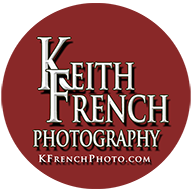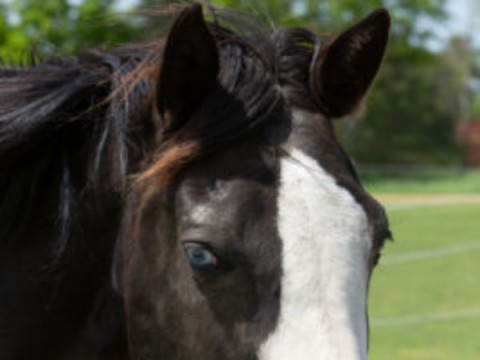What is ISO?
Setting Camera Sensitivity
How does one use it to their advantage? What is ISO relative to? Why should I care about ISO.
How do I measure ISO?
Do any of these questions sound familiar? Well as an individual that teaches a lot of beginners, I get the ISO question a lot. Above are only a few examples of the way the question comes up so let me try to address or simplify.
Lets start of with an easy one. There is no tool or meter dedicated to measuring ISO. The key word "dedicated". There are tools that help you figure it out, and fairly simply at that, but no one tool is dedicated to measuring ISO. Why ?!! Good question. The best response I can come up with is that ISO is only relative to itself. There is no scenario where you can look at a scene and say this is a 2000 ISO scene, or this product is a 100 ISO scene, or there are 8000 ISO's in this room. Now before you seasoned shooters shoot me a rebuttal. I know, because I do it, one can walk into a scene and know right off the top where to start on the ISO scale for a particular scene but in your experience you have already sized up the characteristics making up the rest of the shot and the circumstances you are shooting in and know at the very least you need "X" ISO. But no one particular anything can be measured in ISO. Because it is not a physical property. It is a measurement related only to itself so in the right context it can be easily understood.
So What is it?
Ok lets clear this up. What is ISO ? ISO is a setting used to determine how sensitive to light your camera's digital sensor is going to be in any given photo. For you real beginners, the digital sensor is the electronic, light sensitive cell that captures the light and converts it into a photo image. It's a major component in your camera. ISO setting tells your sensor how sensitive it needs to be in certain lighting conditions. In general, when the light is very bright, ISO 100 is all you need. So outside, snow everywhere and the sun is out. ISO 100 for most cameras is the lowest setting for sensitivity. Some phones and simple cameras only drop to 200, some of my pro cameras drop to 50. The thinking is simple. There is so much light to capture, that by simply manipulating the lens (Aperture) and the Shutter speed, the shooter can control the light in their favor to properly record the image. However when the lighting drops off like the same shot at blue hour, or the 30 minutes or so after sunset, the brightness is gone. If you were going to use the same settings for your Aperture and your Shutter Speed, then you'll need to increase the sensor's sensitivity to light by increasing the ISO. AGAIN.. seasoned shooters stop grumbling, ISO is the topic here. I know you would have whipped out your tripod and just…. ok I know! I'm focusing on ISO scenarios (Pun intended) Noticed I underlined "same" in the preceding sentence. As the light later in the day dropped off, the setting's you used in bright sun will not work. Something has to change and one of those changes is increasing the ISO. How much ISO? Well here's the simple math. When you move up and down the scale the ISO either doubles in sensitivity or is gets cut in half. By changing from 100 ISO to 200 ISO, you have essentially made your camera 2x more sensitive to light. if you went from 100 to 800 , you doubled your sensitivity 3 times. 100 -200-400-800, 3 steps up doubling each time. The reverse is also true. when switching from 6400 ISO to 3200 ISO the sensitivity is cut in half. The scale on most mid ranged cameras today is 100 – 12,500 ISO. That's huge!
There is a trade off as you continue raising the ISO. Depending on the quality of the camera eventually the digital noise, or the grain of the digital sensor becomes very noticeable or even obtrusive. The dots that make up the photo become very prominent and distracting. Especially if the image is to be enlarged to a wall hanger. So there is a point where, if the setting is too high for the given scene your quality drops off. For that reason you don't just leave your ISO in a very high setting all the time. Unless of course you only shoot in very low light. Those high settings in the bright light will cause very high contrast and poor transition from bright areas to shadowed areas in a general scenery photo. Your goal is to match the scene with the right range of ISO. It does take a little experimenting but, if you set your aperture and your shutter speed first, then use your ISO to push you into the proper or desired exposure, you'll usually end up in the right range.
Some very artistic photographers will play with extreme settings for ISO in certain images to create an artistic look or surreal look. It's their tastes and artistic imagination that will drive the look rather that accuracy the scene.
ISO is a tool in your photographic tool box. With the right camera it can allow you to take extremely low light images with out flash or other augmented lighting systems. It will also have acceptable amounts of grain or digital noise mentioned earlier. Those cameras are usually at the high end, over $1,500 for a camera body alone. However this is an area that many manufactures are spending a fair amount of research and development dollars on for the control or to manage at acceptable rates given the price point of the various cameras. i.e. a $3000 camera body will usually have far better low light high ISO capability that the $400 camera body.
ISO can be your "Ace up your sleeve" in any given shoot depending on how much gear you want to haul, or how mobile you need to be. The most typical use for running up your ISO is to gain the ability to also speed up your shutter speed for a shot where stop action is the necessity. In a simple phrase, the more sensitive to light your camera is set for, it then lowers the length of time you need to let light into the camera via the shutter. So if you are learning the functions of the shutter speed on your camera, you will eventually learn that a fast shutter stops or freezes the action of your subject. The faster your subject is moving, the faster you need to set your shutter speed. If the photo is too dark, or the subject is still a blur, then you can increase the ISO higher, which in turn will allow you to speed up your shutter.
This is one of the relationships in the photographic triangle. The relationship between Shutter speed, Aperture diameter, and ISO. Hopefully for someone still struggling with ISO this generated an "Ah-Haaa" moment. It's only a 1/3 of the triangle but it is important to understand. The beauty of ISO today with digital vs years ago with film, is you can change your ISO from shot to shot with digital. Where as with film the whole roll of 24 or 36 shots was one setting. So in some cases you carried multiple cameras with different film ISO ratings to adjust for changing lighting conditions. AHHHH the good old days. LOL !!
Are you more of a hands on learner? How about joining Keith on one of his many photography workshops. For more information on up coming workshops list: https://kfrenchphoto.com/workshops.When you subscribe to the blog, we will send you an e-mail when there are new updates on the site so you wouldn't miss them.





Comments